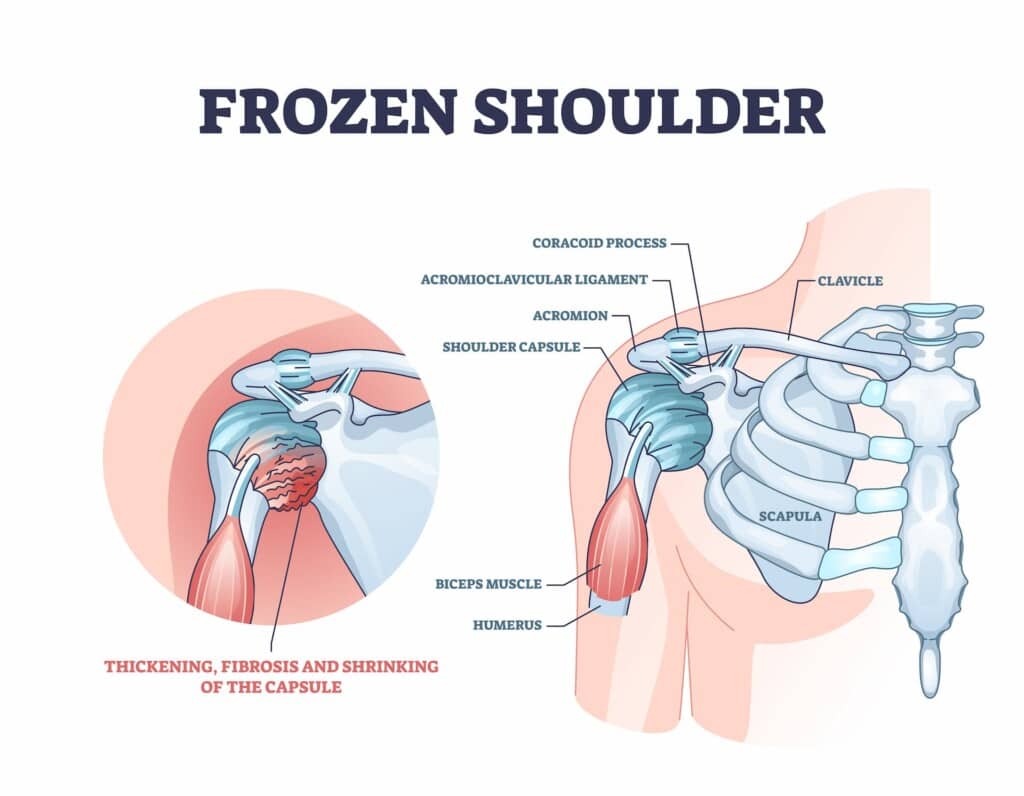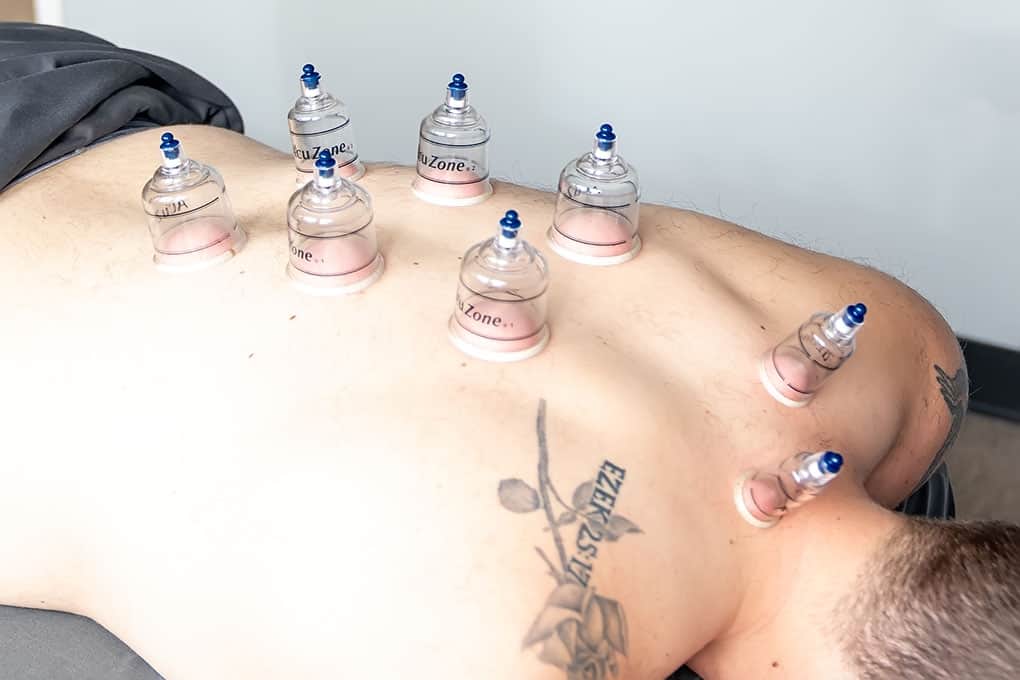Have you ever experienced stiffness and pain in your shoulder that just won’t go away? You might be dealing with a condition called frozen shoulder, or adhesive capsulitis. This issue can creep up on you, gradually limiting your ability to move your shoulder freely and making everyday tasks a challenge.
While traditional treatments can help, they don’t always provide complete relief. That’s where bodywork therapy comes in. Bodywork therapy involves a variety of hands-on techniques specifically designed to improve mobility, reduce pain, and enhance your overall sense of well-being.
The shoulder joint, also known as the synovial joint, has a special membrane called the “capsule” that keeps it sealed off from the rest of your body. Sometimes, this capsule can get stuck, a condition known as adhesive capsulitis or “frozen shoulder.”
When this happens, the shoulder muscles tighten and become inflamed. In an attempt to heal and stabilize the area, the body produces extra collagen around the joint, pulling it together like a bandage. This added collagen causes the surrounding tissues to thicken and severely restricts the shoulder’s range of motion, leading to stiffness and pain.
At Bodywork Masters, we locate and release the tension build-up around the capsule that is the root cause of frozen shoulder. Reducing this tension creates an optimal environment for healing and recovery.

Frozen shoulder typically progresses through three stages, each with distinct symptoms:
Frozen shoulder is typically the result of inflammation and thickening of the capsule surrounding your shoulder joint, but the exact reason for this inflammation isn’t always clear. However, there are several factors that can increase your risk of developing this pesky condition.

So, if you fall into any of these risk categories, it’s important to be extra mindful of your shoulder health and seek prompt treatment if you start experiencing any symptoms.
Bodywork therapy uses various hands-on techniques designed to improve mobility, reduce pain, and enhance overall well-being. Common types of bodywork therapy used that can be used to treat frozen shoulder are myofascial release, cupping therapy, trigger point therapy, joint therapy, and assisted stretching.
Ever feel like your muscles and connective tissues are just one big knot of tension? Myofascial release targets exactly that – the tension and tightness in the fascia, the connective tissue surrounding your muscles.
By gently releasing these restrictions, myofascial release improves shoulder flexibility and range of motion, making it easier for you to move your joint and reduce stiffness.
Cupping is an ancient technique that involves creating suction on the skin using specialized cups. This suction helps promote pain relief, reduce inflammation, and relax those stubborn muscles by releasing tension.
For frozen shoulder, cupping enhances blood flow to the shoulder area, loosens up the connective tissue, and triggers your body’s natural pain-relieving mechanisms, all of which can help manage your symptoms.

Trigger point therapy focuses on specific points of muscle tension called trigger points.
By releasing tension in muscles surrounding the shoulder joint, trigger point therapy alleviates pain, improves range of motion, and enhances overall shoulder function in individuals with frozen shoulder.
Joint therapy, also known as joint mobilization or manipulation, is focused on enhancing joint movement and function.
It works to restore joint movement, break up scar tissue, reduce pain, improve joint alignment, and enhance body awareness (proprioception).
Sometimes, you just need a little help to get those stretches done right. Assisted stretching involves working with a trained professional who will guide you through stretches designed to improve your flexibility and range of motion.
For frozen shoulder, this can increase your shoulder’s mobility, improve flexibility, release tension, promote proper movement patterns, enhance circulation, and boost proprioception – a winning combination for improved shoulder function and reduced symptoms.

Collectively, these benefits make bodywork therapy a valuable component of treatment for frozen shoulder, helping individuals regain mobility, reduce pain, and improve their overall quality of life.
While bodywork therapy is effective, incorporating additional strategies can further aid in managing and preventing frozen shoulder:

Suzanne’s firsthand experience as a client clearly shows the impact of bodywork therapy on frozen shoulder. Suzanne first came to Bob after having surgery for frozen shoulder. Despite physical therapy, she still had limited range of motion and persistent pain.
Bob used a combination of massage techniques like deep tissue, myofascial release, and stretching exercises tailored specifically for her frozen shoulder.
With regular orthopedic massage sessions, Suzanne saw impressive improvements. Her range of motion increased significantly, allowing her to do daily activities more easily. Her pain levels also gradually decreased.
Years later, when she developed frozen shoulder in her other shoulder, she decided to skip surgery and continue orthopedic massage with Bob instead.
Again, through consistent massage therapy focusing on alleviating pain, reducing inflammation, and restoring mobility, Suzanne regained full range of motion in her second frozen shoulder without any invasive procedures and a faster healing time.
Bob’s targeted massage approach provided amazing results for this client’s frozen shoulders in both cases.
“I have recommended dozens of people to Bob, I truly believe that anyone that has pain in their body or lack of range of motion could benefit, and avoid surgery/medication. My husband, children and siblings have all been treated at BWM. My husband and I keep regular appointments with Bob for maintenance.”
– Suzanne Lowry
Frozen shoulder can greatly impact daily life and well-being. While traditional treatments provide limited relief, bodywork therapy offers a promising alternative through techniques like myofascial release, cupping, trigger point therapy, joint mobilization, and assisted stretching.
The benefits are clear. These techniques can significantly improve mobility, reduce pain, enhance circulation, promote muscle relaxation, reduce stress, and improve overall quality of life providing a non-invasive, effective alternative to surgery or medication.

Additionally, incorporating preventative measures such as regular exercise, maintaining good posture, and active recovery can help manage and prevent frozen shoulder. Combining bodywork therapy with other treatments like physical therapy and medication, under the guidance of healthcare professionals, can also optimize recovery.
If you’re facing the challenges of frozen shoulder, consider bodywork therapy as a viable option to regain your mobility and reduce pain. With the right approach, you can restore your shoulder function and enjoy a better quality of life! Book your first session today!